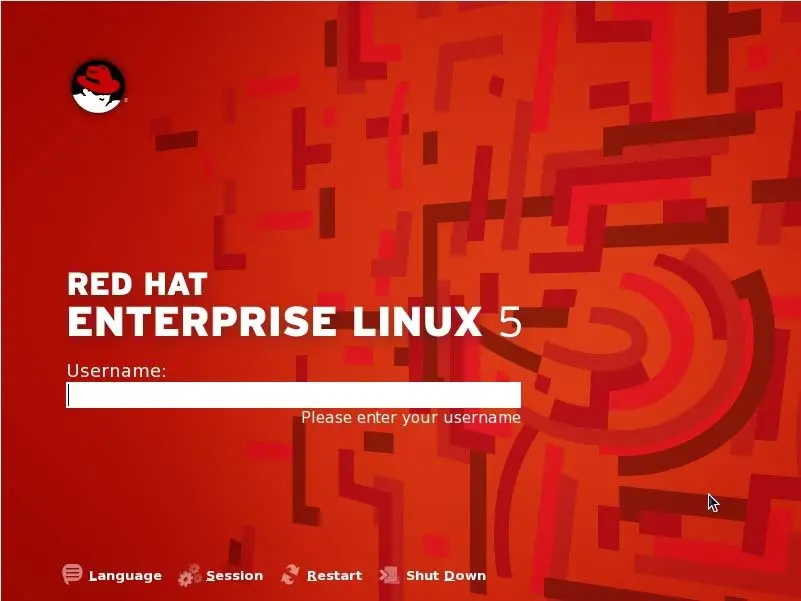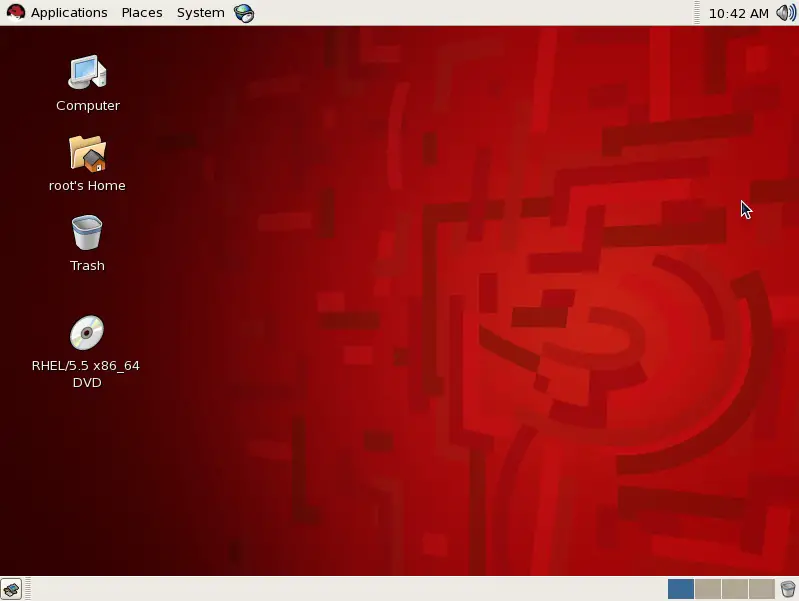Logging into the RHEL 5 GNOME Desktop
| Previous | Table of Contents | Next |
| Allocating a Windows Disk Partition to RHEL 5 | A Guided Tour of the RHEL 5 GNOME Desktop |
|
You are reading a sample chapter from the RHEL 5 Edition book. Purchase the fully updated Red Hat Enterprise Linux 8 (RHEL 8) Edition of this publication in eBook ($9.99) or Print ($36.99) format Red Hat Enterprise Linux 8 Essentials Print and eBook (ePub/PDF/Kindle) editions contain 31 chapters and over 250 pages |
When you first boot from a Red Hat Enterprise Linux 5 installation you will most likely be presented with a Login Screen similar to the one shown in the following figure (though the appearance and layout of the screen changes from one release of RHEL to the next):
This screen has a number of options and text fields that give the user some level of control over what happens next:
- Username – The text field into which the user must enter their name in order to log into the RHEL desktop environment. Pressing the Enter key after typing the user name will display the password field.
- Password: - This input field only appears after a user name has been typed into the Username: field and the Enter key pressed. Once the password has been entered, press the Enter key again to initiate the login process.
The bottom of the screen contains a number of additional options:
- Language - Allows the use to start the desktop in the language of their choice. The selection of languages available will depend on the locales installed during the installation process.
- Session – Allows the type of desktop session to be selected. If another desktop environment (such as KDE) was installed along with the GNOME desktop it may be selected in this menu. The Failsafe Terminal option opens a minimal desktop environment running a single terminal window and no desktop environment. This can be useful for resolving problems when you are unable to log in using the GNOME desktop. Typing exit in the terminal window will return you to the login screen. Note also that the terminal window will only accept keyboard input when the mouse pointer is positioned inside the window.
- Restart - Reboots the system. If this option is selected the system will display a confirmation window verifying the system is to be restarted before doing so.
- Shut Down - Shuts the system down to it’s powered off state. As with the Reboot option, confirmation will be sought before the shutdown proceeds.
Once valid login credentials have been provided, RHEL will initiate the login process and present the desktop. As with the login screen, the appearance of the desktop changes between RHEL releases, so do not be concerned if your desktop does not appear exactly as illustrated below:
Assuming you have now logged successfully into a RHEL 5 GNOME Desktop session, and have a screen in front of you similar to the one shown above we can begin to explore the desktop in more detail in A Guided Tour of the RHEL 5 GNOME Desktop.
|
You are reading a sample chapter from the RHEL 5 Edition book. Purchase the fully updated Red Hat Enterprise Linux 8 (RHEL 8) Edition of this publication in eBook ($9.99) or Print ($36.99) format Red Hat Enterprise Linux 8 Essentials Print and eBook (ePub/PDF/Kindle) editions contain 31 chapters and over 250 pages |
| Previous | Table of Contents | Next |
| Allocating a Windows Disk Partition to RHEL 5 | A Guided Tour of the RHEL 5 GNOME Desktop |







